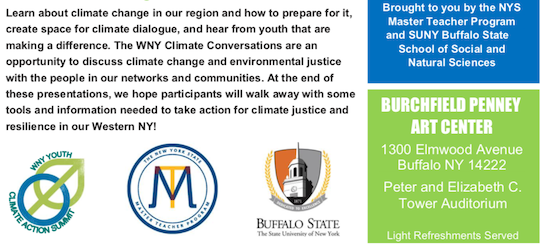~ ~ ~
Gov targets 100% clean energy by ’40; Some say it’s not enough
January 21, 2019 | The VillagerBY SYDNEY PEREIRA | Governor Andrew Cuomo recently announced his version of a “Green New Deal” to tackle climate change and ramp up clean energy.
Under his plan, 100 percent of the state’s electricity would be generated by clean power by 2040. This would be achieved by using a mix of energy sources like solar, wind, nuclear and hydropower.
A new Climate Action Council would develop a plan for carbon neutrality across the entire economy — meaning reducing the carbon footprint across industries and sources of greenhouse gas emissions that are causing climate change.
“We know it’s coming,” Cuomo said in his State of the State address on Jan. 15. “Let the economy be here.”
Cuomo’s “Green New Deal” also includes green technology development, a $1.5 billion investment in offshore wind projects, and a $70 million property-tax compensation fund to help communities transition when old power plants close.
“We want those old plants closed. We want more efficient plants,” Cuomo said. But the state should fund the transition, so “those communities don’t shoulder the burden themselves,” he said.
Cuomo’s announcement comes after years of planning by a coalition of community groups, NY Renews, that have pushed for their own version of a climate action plan. Their plan forms the basis of the current Climate and Community Protection Act, sponsored by state Senator Brad Hoylman and Assemblymember Steve Englebright.
That bill would have mandated the state’s electricity be generated by 50 percent renewable energy by 2030, and that all industries eliminate 100 percent of greenhouse gas emissions by 2050. The community-initiated bill passed three times in the Assembly but has languished in the Senate.
NY Renews welcomed Cuomo’s announcement, but criticized his failure to set a timeline for a transition to clean power economywide.
“For years, the Climate and Community Protection Act has represented a true climate-justice agenda for our state,” NY Renews said in a statement in response to Cuomo’s address. “It is heartening to see progress toward a fossil-fuel-free New York.”
However, the coalition added, a “truly comprehensive plan to tackle climate change needs more specific deadlines, planning processes and accountability for moving our whole economy off of fossil fuels than are currently included.”






